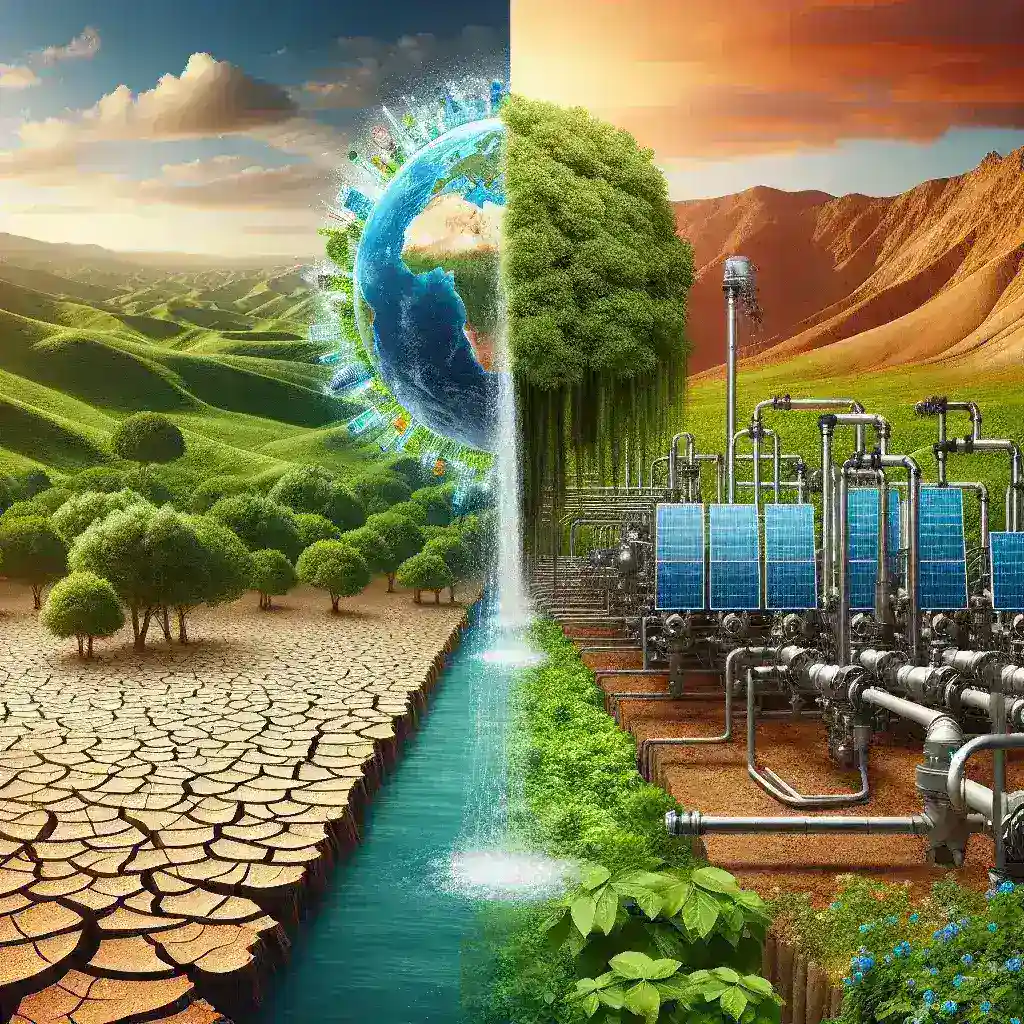Introduction
Water scarcity is becoming an increasingly critical issue worldwide, threatening the livelihoods of millions and impacting agricultural production, industry, and health. With a growing population and climate change exacerbating these challenges, innovative technologies play a vital role in addressing and mitigating the effects of water scarcity. In this article, we will explore various technological advancements that are revolutionizing water management and conservation efforts globally.
Understanding Water Scarcity
Water scarcity can be classified into two main categories: physical scarcity and economic scarcity. Physical scarcity refers to regions where water resources are insufficient to meet demand, while economic scarcity occurs when a lack of infrastructure prevents access to available water resources. Addressing these challenges requires a multifaceted approach involving technological innovation, policy change, and community engagement.
The Role of Technology in Water Management
The intersection of technology and water management has led to unprecedented solutions that help conserve and efficiently use water resources. Here are some key technologies making a significant impact:
-
1. Smart Irrigation Systems
Smart irrigation systems utilize IoT (Internet of Things) sensors to monitor soil moisture levels, weather conditions, and plant water needs. These systems can adjust watering schedules and amounts based on real-time data, ensuring crops receive the precise amount of water they need without waste. This technology is particularly beneficial in agriculture, where it can lead to increased yields while conserving scarce water resources.
-
2. Desalination Technologies
Desalination is the process of removing salt and impurities from seawater to produce fresh water. As freshwater sources continue to dwindle, desalination has emerged as a viable solution for water-scarce regions. Advances in nanotechnology and energy-efficient methods have made desalination more affordable and environmentally friendly, providing a reliable source of drinking water for populations in need.
-
3. Water Recycling and Reuse
Water recycling involves treating wastewater so it can be reused for various purposes, such as irrigation, industrial processes, or even drinking water. Advanced filtration and treatment technologies enable the safe reuse of water, reducing the demand on freshwater sources. Cities like Singapore have implemented successful water recycling programs, showcasing the effectiveness of this approach in urban settings.
-
4. Rainwater Harvesting
Rainwater harvesting systems collect and store rainwater for later use, mitigating the effects of seasonal droughts. Modern technologies have streamlined the collection and management processes, making it easier for households and businesses to implement rainwater harvesting systems. Combined with filtration systems, harvested rainwater can be used for irrigation, flushing toilets, or irrigation, significantly reducing dependence on municipal water supplies.
-
5. Mobile Water Monitoring Apps
Mobile applications are emerging as powerful tools for water management. Some apps enable users to track their water consumption, receive reminders for conservation practices, and report issues like leaks. Additionally, utilities can use mobile platforms to enhance community engagement, educating users about water scarcity issues and promoting conservation efforts.
-
6. Artificial Intelligence and Machine Learning
AI and machine learning technologies help optimize water usage across various sectors. In agriculture, these technologies can analyze vast amounts of data to forecast water needs, increasing efficiency. In urban settings, AI can assist in detecting leaks in water distribution networks, minimizing waste and ensuring a more reliable supply.
-
7. Cloud-Based Water Management Solutions
Cloud technology enables utilities to manage water resources more effectively by providing real-time data analysis and monitoring capabilities. Cloud-based systems can track water quality, usage patterns, and infrastructure status, allowing for proactive maintenance and timely response to potential issues. This technology empowers cities to make informed decisions regarding water management and conservation strategies.
Case Studies of Technology Implementation
To illustrate the impact of technology on reducing water scarcity, let’s take a look at a few successful case studies:
-
1. Israel’s Agricultural Innovations
Israel has long been a pioneer in water conservation technologies. Through the use of smart irrigation systems, treated wastewater, and crop selection suited for arid conditions, the country has created a sustainable agricultural model that produces food with minimal water usage. These innovations have transformed Israel into a leading agricultural exporter, demonstrating the potential of technology to address water scarcity effectively.
-
2. Singapore’s NEWater Initiative
Singapore’s NEWater program is an exemplary model of water recycling. By treating and purifying wastewater to produce high-quality reclaimed water, Singapore has significantly reduced its reliance on external water sources. The city-state has invested in advanced filtration and purification technologies, making NEWater suitable for drinking and industrial use. This initiative showcases how innovative solutions can transform water management in urban areas.
-
3. California’s Smart Water Management
California has been at the forefront of implementing smart water management technologies to address ongoing drought issues. The state has adopted methods such as soil moisture sensors, satellite imagery, and predictive analytics to optimize irrigation practices. These technologies empower farmers to make data-driven decisions, ensuring crops receive adequate water while reducing waste.
Challenges and Future Directions
While technology holds great promise in alleviating water scarcity, several challenges remain. High initial investment costs, lack of infrastructure, and technological access disparities can hinder the adoption of innovative solutions. Collaborative efforts between governments, private sectors, and communities are essential to overcoming these obstacles.
Conclusion
The role of technology in fighting global water scarcity cannot be overstated. By harnessing the power of innovative solutions, we can create more sustainable water management practices that benefit communities and ecosystems alike. Continued investment in research, development, and infrastructure is necessary to ensure that everyone has access to clean and safe water, paving the way for a more secure future.
Call to Action
As individuals, we can also contribute to fighting water scarcity by adopting sustainable practices in our daily lives. Consider becoming water-savvy and implementing water-efficient devices at home and participating in local conservation initiatives. Together, we can make a difference in securing our planet’s vital water resources.

